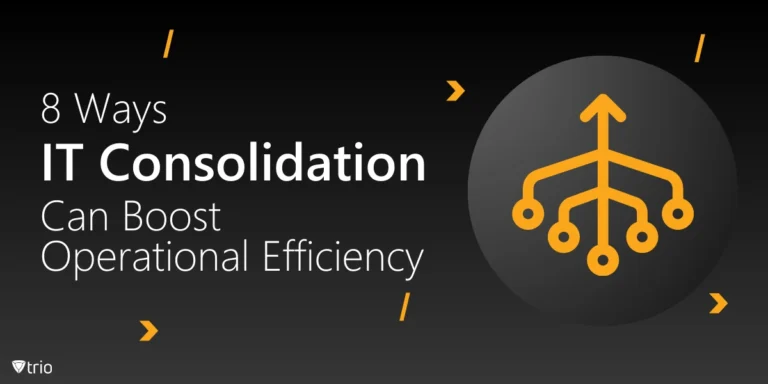In a major cybersecurity event, SelectBlinds, a prominent retailer specializing in window coverings, revealed a data breach affecting over 200,000 customers. This breach, resulting from a sophisticated e-skimming attack, went unnoticed for nearly nine months. Sensitive customer data, including payment card details, was stolen, highlighting the growing risk of cyberattacks targeting online stores.
This article examines the details of the SelectBlinds breach, explores how e-skimming attacks operate, and outlines measures both businesses and customers can take to protect themselves from similar incidents.
The Scope of the Breach
SelectBlinds’ data breach occurred between January 7 and September 28, 2024. During this period, attackers infiltrated the company’s website, embedding malicious code to scrape sensitive customer information directly from the checkout page. The stolen data included:
- Names, email addresses, and phone numbers
- Shipping and billing addresses
- Complete payment card details (card numbers, expiration dates, CVV codes)
- Website login credentials for customers who used their accounts during the checkout process
How Was the Breach Discovered?
The attack came to light on September 28, when SelectBlinds’ cybersecurity team noticed unusual activity on their website. A closer investigation revealed malware embedded in their checkout page, enabling data theft during transactions. This malware remained active for months, stealing sensitive information with every completed purchase.
The E-Skimming Threat: What Happened to SelectBlinds?
E-skimming, also known as Magecart attacks, is a type of cybercrime increasingly targeting e-commerce websites. In these attacks, hackers inject malicious JavaScript into a website’s payment processing page.
How E-Skimming Works
E-skimming functions like a digital version of a physical card skimmer found on compromised ATMs. Here’s how it typically unfolds:
- Infiltration: Hackers exploit vulnerabilities in a website, such as outdated software or weak security settings.
- Injection: Malicious code is inserted into the checkout page or other payment-related sections.
- Data Capture: When customers input payment information, the code intercepts the data before encryption is applied.
- Data Transmission: The captured information is sent to a remote server controlled by the attackers.
In the SelectBlinds case, the attackers used malware to scrape data from transactions. Unlike database breaches, where encryption can offer protection, e-skimming captures data at the input stage, bypassing encryption altogether.
Why E-Skimming Attacks Are on the Rise
E-skimming attacks are particularly appealing to cybercriminals due to their ability to exploit high-traffic websites. Here’s why these attacks have become more frequent:
- Stealth: The malicious code operates in the background, making detection challenging for both users and businesses.
- Real-Time Data Access: Hackers gain instant access to customer data as it is entered.
- Minimal Resource Investment: A single breach can yield hundreds of thousands of records with relatively low effort.
The Global Impact of E-Skimming
The SelectBlinds breach is part of a broader pattern of e-skimming incidents. According to Recorded Future’s 2023 Payment Fraud Intelligence Report, over 119 million stolen payment cards were posted for sale on dark web marketplaces in a single year.
Authorities worldwide are responding to these threats. Europol and law enforcement agencies from 17 countries recently collaborated to warn online retailers about vulnerabilities in their payment systems. Russian authorities, in a rare move, publicly charged six individuals in April for stealing the details of 160,000 credit cards using Magecart techniques.
Immediate Actions Taken by SelectBlinds
After discovering the breach, SelectBlinds implemented several measures to mitigate the impact and prevent further attacks:
- Malware Removal: The company eradicated the malicious code from its website.
- Account Security Measures: User accounts were locked to prompt customers to reset their passwords.
- Enhanced Monitoring: Website monitoring was strengthened to identify and prevent similar breaches in the future.
- System Upgrades: Security protocols across systems were reinforced.
These actions demonstrate the company’s effort to address the breach, though the incident underscores the need for stronger preventative strategies.
The Role of Individuals in Cybersecurity
While businesses bear the primary responsibility for safeguarding customer data, individuals must also take proactive steps to protect themselves. Below are some recommended actions in the wake of a breach:
1. Monitor Financial Accounts
Review bank and credit card statements frequently for unauthorized transactions. Early detection can reduce the damage caused by fraud.
2. Change Passwords Immediately
If you’ve used the same credentials across multiple sites, change your passwords promptly. Avoid reusing passwords to reduce the risk of further compromise.
3. Stay Vigilant for Phishing Scams
Stolen data often fuels phishing attacks. Be cautious of unsolicited emails or messages asking for personal information or account verification.
4.Consider Using Credit Monitoring Services
Credit monitoring can help track suspicious activity and prevent identity theft. Many services offer alerts for unusual account behavior.
Lessons Learned from the SelectBlinds Breach
The SelectBlinds incident offers valuable insights into how companies and individuals can improve their defenses against e-skimming attacks. It serves as a cautionary tale for both businesses and consumers navigating the increasingly perilous world of online transactions.
For Businesses: The Need for Proactive Security
E-commerce companies must recognize that protecting customer data is an ongoing process that requires vigilance. The following measures are critical to reducing the risk of e-skimming attacks:
1. Regular Website Audits
Conducting frequent security audits helps identify vulnerabilities before attackers can exploit them. This includes testing for outdated plugins, weak configurations, and other potential entry points for malicious code.
2. Real-Time Threat Detection
Deploying tools that monitor website activity in real-time can help detect and block unusual behavior, such as unauthorized code injections. Many modern tools can identify and quarantine malicious scripts automatically.
3. Staff Training
Cybersecurity awareness isn’t just for IT departments. Employees across all departments should be educated about the risks of phishing, credential theft, and other tactics that attackers use to gain access to sensitive systems.
4. Layered Security Measures
No single defense can stop every attack. Using a combination of firewalls, intrusion detection systems, and encryption provides multiple lines of defense, reducing the likelihood of a successful breach.
For Consumers: Strengthening Personal Security Habits
Although businesses are the primary targets in e-skimming attacks, individuals can also take action to safeguard their personal information:
1. Enable Two-Factor Authentication (2FA)
Wherever possible, enable 2FA on online accounts. This adds an extra layer of security, requiring both a password and a secondary verification method, such as a one-time code sent to your phone.
2. Use Virtual Payment Methods
Many banks and credit card providers offer virtual cards that generate unique numbers for each transaction. This reduces the risk of your real card details being compromised.
3. Update Software and Devices
Outdated software is a common gateway for attackers. Keep your operating systems, browsers, and antivirus programs updated to ensure they have the latest security patches.
4. Be Mindful of Public Wi-Fi
Avoid entering sensitive information, such as payment details, while connected to public Wi-Fi networks. If necessary, use a virtual private network (VPN) to secure your connection.
Broader Implications of E-Skimming Attacks
The SelectBlinds breach is part of a growing trend of cybercrime targeting e-commerce platforms. Understanding the broader implications can help both businesses and consumers prepare for the evolving nature of these threats.
The Financial Impact
E-skimming attacks not only affect customers but also impose significant financial costs on businesses. Companies may face:
- Regulatory fines for failing to protect customer data.
- Compensation claims from affected individuals.
- Revenue loss due to reputational damage and decreased customer trust.
According to the 2023 IBM Cost of a Data Breach Report, the average cost of a data breach in the retail sector was $3.28 million.
The Role of Global Cooperation
As cybercrime becomes more sophisticated, it increasingly crosses borders. International cooperation among law enforcement agencies is crucial in combating threats like e-skimming. Recent actions, such as Europol’s collaboration with multiple countries to alert online retailers, show the potential of coordinated efforts in reducing global cybercrime.
The Shift Toward Prevention
Reactive measures, while important, are often insufficient to stop the most advanced attacks. Businesses must adopt a preventive approach, integrating security into every stage of their operations. This includes not only technological safeguards but also robust incident response plans to minimize the impact of breaches when they occur.
The Human Element in Cybersecurity
Despite the technical nature of e-skimming attacks, the human element remains central to both prevention and response. For companies, this means fostering a culture of cybersecurity awareness where employees understand their role in protecting sensitive data. For individuals, it means adopting habits that reduce exposure to potential risks.
Encouraging Security Awareness in Organizations
Organizations must prioritize training programs that emphasize the importance of cybersecurity at every level. Employees should be able to recognize suspicious activities, understand their role in preventing breaches, and feel empowered to report potential vulnerabilities without fear of reprisal.
Building Consumer Trust
Consumers are more likely to trust businesses that demonstrate a commitment to transparency and security. Clear communication about how customer data is protected, coupled with timely notifications in the event of a breach, can help maintain trust even during difficult situations.
What the Future Holds
The growing prevalence of e-skimming attacks suggests that cybersecurity will remain a top priority for e-commerce platforms. Advances in technology will likely bring both new opportunities for securing data and new challenges as attackers refine their methods.
Adapting to Emerging Threats
Artificial intelligence and machine learning are being increasingly used by both defenders and attackers. Businesses must stay ahead by investing in tools that can predict and prevent attacks based on real-time data analysis.
Strengthening Regulations
Governments worldwide are introducing stricter data protection laws aimed at holding companies accountable for safeguarding customer information. These regulations not only encourage better security practices but also provide consumers with greater rights and protections.
See Trio in Action: Get Your Free Trial Now!
Final Thoughts
The SelectBlinds breach serves as a sobering reminder of the risks inherent in today’s online shopping environment. E-skimming attacks represent a clear and present danger to both businesses and consumers, demanding vigilance, education, and proactive measures to mitigate the threat.




